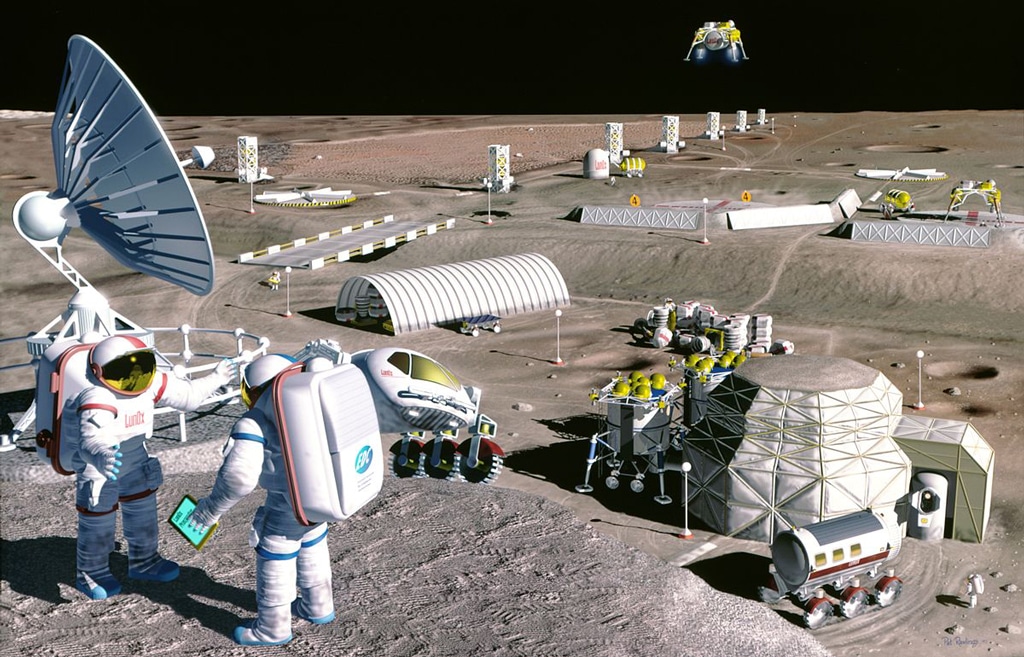Moon Dreams of Aneutronic Fusion

Knowing What We Know Today
August 8, 2017
We learned from history that a Roanoke Colony colony disappeared in 1587. The Anglo-Spanish war prevented anyone from sailing back to the colonists until 1590. If industries finally chase after the mineral riches on the moon, they will need a colony there, and sustainable plans will be required. There is a huge opportunity to advance our science and engineering by setting these large goals, but we must also remember the legacy of those who have sacrificed as explorers. Surviving in that environment should remind us of contingency plans for those distances. There should be ways to rescue pioneers or miners. Moon Pioneers need long term energy plans and a vast number of supplies to get started.
“If you’re going to have humans on the moon and you need water for drinking, breathing, rocket fuel, anything you want, it’s much, much cheaper to live off the land than it is to bring everything with you,” said Lunar Flashlight principal investigator Barbara Cohen, of NASA’s Marshall Space Flight Center in Huntsville, Alabama.
There are historical lessons and current realities that need to be addressed in these proposed adventures to the Moon. Living off the land requires sources of energy that are economical and can be transported with you. These are obvious cargo requirements, and solar is not going to be a long term solution for large scale mining efforts.
Energy in space and on the earth have an intertwined relationship. It is what places limits on our society now, and our ability to explore the next frontier. The current reality of our thirst for commerce, greater resources, and riches in space exploration leaves out many parts of the energy puzzle to be solved before those adventures begin. Energy gained from a small fusion reactor that provides abundant inexpensive energy would solve our planet’s environmental issues and improve mining in space. Think of it as the ultimate X-prize.
If the mitigating risk is part of the business equation, what happens if the billions invested in a Moon colony lack the energy to fully develop the operation? These plans are extremely complicated and require longer than normal time lines, because of the distance and environments. Rare metals should be processed on the moon and manufactured into satellites, then launched at one-sixth the cost from the moon. This requires powering and staffing facilities with a small aneutronic fusion reactor from Lawrenceville Plasma Physics. Shipping the small aneutronic reactor to the moon will be far less expensive than building an eleven story Tokomak, or a fission reactor, with all their complicated radioactive requirements.
“We think that the lunar surface contains enough rare earth metals,” Shevchenko told RBTH. “On Earth, reserves of cerium, lanthanum, neodymium, praseodymium and other metals that are primarily used in the manufacture of high-tech products have dwindled. China currently has the monopoly on this market.”According to forecasts by Goldman Sachs, by 2015 the price of a basket of light rare earth metals (lanthanum, cerium, praseodymium, neodymium, samarium, and europium) will be $243 per kilogram.
Can you economically mine, process, ship Helium-3(He-3) back to earth, and still make a profit? The estimated cost of getting(He-3) back to earth is $40,000 per ounce. It doesn’t seem completely practical in our current state of technological development. Rare metals shipped back to earth and made into satellites, would be launched back into space. Yes, we have other needs here on earth for those rare metals, it will be far more economical to get them in a pure form from the Moon facilities. It will cost less than bringing raw materials back to Earth and shoots a hole right through that expensive cost per ounce.
The Horizon
The cost of lifting cargo off the earth needs to evolve and drop in price. Proving that aneutronic fusion is part of the solution requires greater investment in this technology to assure long term success in such adventures. You can’t leave a mining community on the moon without fusion energy and an emergency evacuation plan. Those asteroid impact craters are merely warning signs that should be heeded by those searching for riches.
The big exciting adventure of a gold rush on the moon provides a motivation for adventurers’ to dream. It would be a huge shot in the arm for space industrial complex. Our continuous acceleration of commerce into space without the needed investment in small aneutronic fusion energy is a dangerous dream.